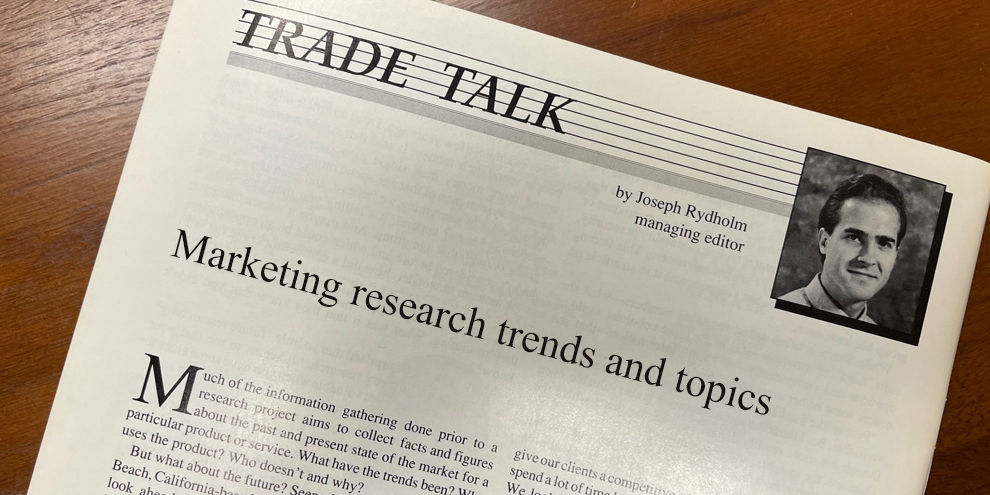A funny thing happened to me while watching the Super Bowl. Actually, it was more disturbing than funny. As the Buffalo Bills began self-destructing (a la our own Minnesota Vikings, four-time Super Bowl losers), I found myself more interested in the commercials than the game itself. Once, I even timed a trip to the bathroom so I wouldn't miss the commercials.
But who can blame me? Advertisers go all out to make the Super Bowl a memorable experience for viewers (sometimes I think they put more effort into it than the football players), unleashing a parade of high-buck ads with eye-popping special effects and star-studded casts. And while it all gets to be a bit overwhelming, at least it's not dull - which is often more than you can say for the actual game.
According to the annual SuperPoll, a post-game survey of 1000 Super Bowl fans conducted by Milwaukee-based Cramer-Krasselt advertising, the average total commercial recall figure for ad spots in this year's game was the highest it's ever been. So, like me, a lot of other people must have been impressed (in some way) by what they saw. The average recall was 66%, a big increase over 1992's 59% and the 57% average of previous years.
The agency began conducting the poll in 1989 to test audience recall of Super Bowl commercials. The interviews are conducted by telephone on the Monday following the game. The best-recalled spots this year were those by Anheuser-Busch, Goodyear, Lee Jeans, Master Lock, Pepsi-Cola, and Reebok.
"The commercials continue to be a more important part of the game, and we keep seeing the recall scores at those high levels and increasing year after year. It's part of the Super Bowl atmosphere and people get into it," says Larry Widi, marketing research director, Cramer-Krasselt.
Kept watching
Although the game was one-sided, the survey found that viewers kept watching. "We still had some pretty darn good viewership in the fourth quarter, at least in terms of the people that we talked to. We didn't see a tremendous drop off in audience. And the people who watched in the fourth quarter seemed to be aware of the ads. Maybe they were getting a little bored with the game at that point and they paid more attention to the ads but our fourth quarter recall score was actually higher than the game average." Some other findings:
- 66.8% of the viewers said they find the Super Bowl commercials to be more interesting than TV commercials in general. In 1992, 55% held the same view.
- More people (35%) watched the game at a Super Bowl party this year than last (28.4%).
- 22.8% said they would be willing to shell out $25 to watch the game on pay-per-view TV.
Enough bang for the bucks
Over the years there has been debate about the value of Super Bowl advertising, with advertisers wondering if they're getting a big enough bang for all those bucks. Widi says that some marketers have learned how to do Super Bowl advertising right. "The advertisers understand now that the more you can link executions together into a campaign within the Super Bowl the better recall you' re going to get and the better you're going to communicate your message."
Indeed, the poll found that some of the best-liked commercials were those of McDonald's, Lee Jeans, and Anheuser-Busch, all of whom ran multiple executions. "The campaigns that were strung together, for example McDonald's or Budweiser, those are the companies that came to the top in terms of score. Lee Jeans also did an excellent job this year."
Still, advertisers have to know what they're getting into - Super Bowl ad rates and budgets aren't for the timid. "I think there's a danger if you haven't bought a lot of time and you don't have a great execution. You can get lost. And I think we saw that with some of the advertisers," Widi says.
Widi breaks the Super Bowl ad experience into three segments: "You're either a household name and you buy a lot of time and you get real good recall, or you come up with some real creative executions and you get real good recall, or you're not a household name and you don't have a very creative execution and within that environment you get very low recall."
No terminations
The interviews began with the questions on commercial recall, then moved on to a section of proprietary questions from subscribers. Next came questions from the agency, on such things as food and drink consumption during the game, and finished up with demographics. Widi says the interviewers had no terminations. "Once you start talking about the commercials, the respondents really get into it."
In general, results were similar along age and gender lines, although recall was higher with younger people, which is to be expected, as many of the ads were geared to a younger audience. "Some of the Pepsi ads, for example, a lot of the 45 and older viewers aren't used to that MTV style. But Pepsi is going after a younger age group, and they follow it all. They get the message," Widi says.
